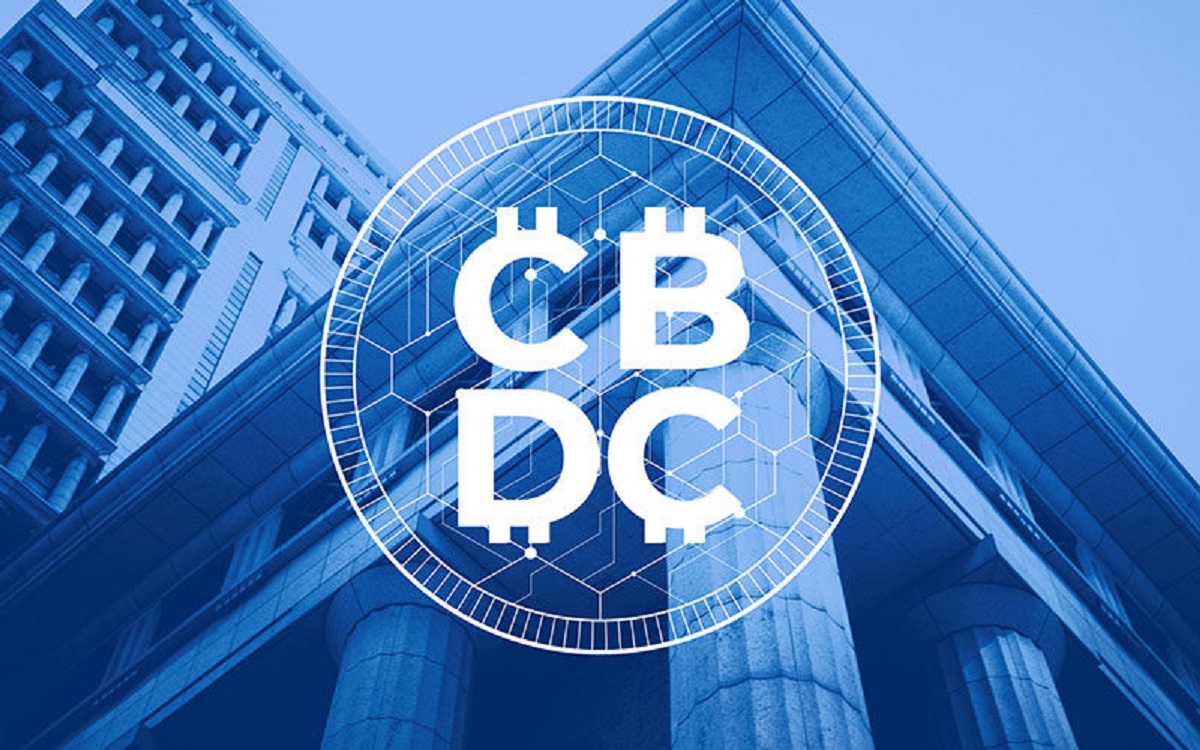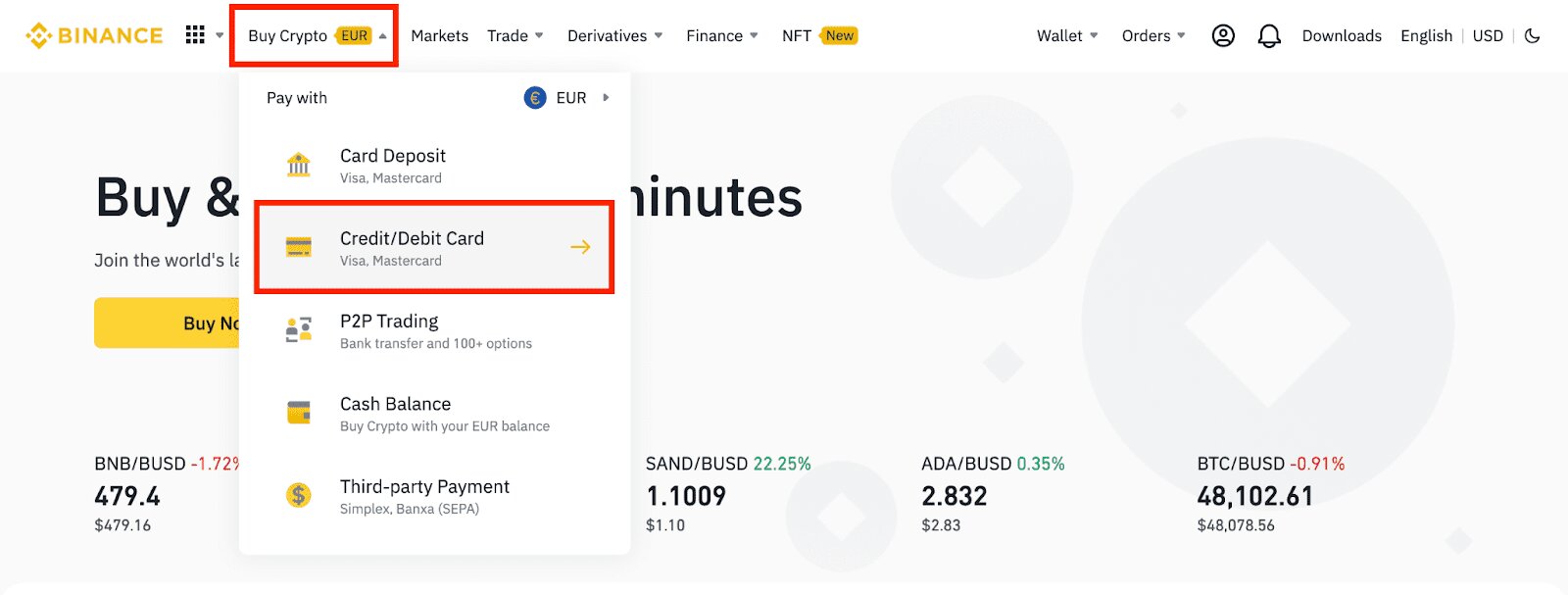Introduction
A Central Bank Digital Currency (CBDC) is a form of digital currency issued by a central bank, backed by the full faith and credit of a nation. While traditional currencies are represented by physical cash and held in bank accounts, CBDCs exist solely in digital form. The concept of CBDCs has gained significant attention in recent years as central banks worldwide explore the potential benefits and challenges of creating their own digital currencies.
CBDCs are designed to be a secure, efficient, and accessible means of conducting transactions using digital technology. They leverage blockchain or distributed ledger technology to provide transparency, immutability, and decentralization. By digitizing the national currency, central banks aim to modernize the financial system, increase financial inclusion, and foster innovation in payment systems.
The rise of cryptocurrencies, such as Bitcoin, has fueled the interest in CBDCs. While cryptocurrencies operate independently of central banks, CBDCs offer the advantages of digital currencies while maintaining the stability and control associated with traditional fiat currencies.
Central banks around the world are actively exploring the potential of CBDCs. The People’s Bank of China (PBOC) has been at the forefront, making significant progress in developing its digital currency known as the Digital Currency Electronic Payment (DCEP). Other countries, including the United States, Sweden, Japan, and the European Union, are conducting research and pilot projects to understand the implications and feasibility of CBDC implementation.
However, the move towards CBDCs is not without challenges and concerns. Security, privacy, and the impact on the existing financial system are among the key considerations for central banks. Striking the right balance between innovation and stability is essential to ensure that CBDCs can effectively serve the needs of the economy while mitigating potential risks.
In the following sections, we will explore the concept of CBDCs in more detail, discuss their benefits and challenges, and examine various approaches taken by different countries in implementing CBDCs.
What is a Central Bank Digital Currency (CBDC)?
A Central Bank Digital Currency (CBDC) is a digital form of a nation’s currency that is issued and regulated by the central bank. It is a digital representation of traditional fiat currency, such as the US dollar or the euro, that can be used for electronic transactions. Unlike decentralized cryptocurrencies like Bitcoin, CBDCs are centralized and controlled by the central bank, which ensures their stability and legal status.
CBDCs are designed to function as a digital equivalent to physical cash, providing a secure, efficient, and convenient means of payment. They can be used for various types of transactions, including online purchases, peer-to-peer transfers, and even in physical stores equipped with digital payment systems.
One of the key features of CBDCs is their digital nature. They exist purely in electronic form and are stored in digital wallets, which can be accessed through mobile devices or other electronic mediums. This eliminates the need for physical cash or traditional banking systems, making transactions faster and more accessible to a wider population, including those without access to formal banking services.
CBDCs also leverage advanced technologies, such as blockchain or distributed ledger technology (DLT), to ensure transparency, security, and efficiency. These technologies enable real-time tracking of transactions, making it easier to detect fraudulent activities and ensure compliance with regulatory requirements.
Furthermore, CBDCs can incorporate programmable features, allowing for the implementation of smart contracts and automated processes. For example, a CBDC could be programmed to automatically enforce certain conditions or restrictions on how funds can be used, ensuring compliance with regulatory policies or preventing illicit activities.
The issuance and distribution of CBDCs are solely controlled by the central bank, providing a level of trust and confidence in the currency. This distinguishes CBDCs from decentralized cryptocurrencies that operate independently of any central authority.
Overall, CBDCs have the potential to revolutionize the financial industry, making transactions faster, more secure, and accessible to a wider population. However, their implementation requires careful considerations to address issues such as privacy, scalability, cybersecurity, and financial stability.
Why are central banks exploring CBDCs?
Central banks around the world are actively exploring Central Bank Digital Currencies (CBDCs) for several reasons. The rise of digital technology, changing consumer preferences, and the emergence of cryptocurrencies have prompted central banks to evaluate the potential benefits and challenges of introducing their own digital currencies.
One of the key motivations for central banks to explore CBDCs is to modernize the financial system. Traditional payment systems are often slow, cumbersome, and costly, especially for cross-border transactions. CBDCs can offer a more efficient and cost-effective alternative to existing payment methods, enabling faster and cheaper transactions.
CBDCs also have the potential to enhance financial inclusion. In many parts of the world, a significant portion of the population remains unbanked or underbanked, lacking access to basic financial services. CBDCs can bridge this gap by providing a digital means of exchange that is accessible to anyone with a mobile device, even without a traditional bank account.
Furthermore, CBDCs can promote financial stability and reduce systemic risks. By providing a digital alternative to physical cash, central banks can have greater visibility and control over the flow of money. CBDCs can help combat money laundering, terrorism financing, and other illicit activities by enabling real-time monitoring and enforcement of regulatory measures.
Another driver for the exploration of CBDCs is the potential to foster innovation in the financial sector. By leveraging technologies like blockchain and smart contracts, CBDCs can enable new forms of programmable money and automated transactions. This opens up opportunities for the development of innovative financial products and services, such as decentralized finance (DeFi) and automated income distribution.
Moreover, central banks are motivated to explore CBDCs as a response to the increasing popularity of decentralized cryptocurrencies. CBDCs offer a way for central banks to maintain control over the monetary system while embracing the benefits of digital currencies. By providing a reliable and regulated digital alternative, central banks can address concerns about the volatility and lack of stability associated with cryptocurrencies.
Ultimately, the exploration of CBDCs by central banks is driven by a combination of factors, including the need for modernization, financial inclusion, stability, innovation, and responding to the evolving landscape of digital currencies. While the implementation of CBDCs presents challenges and requires careful considerations, their potential benefits make them an enticing option for central banks seeking to shape the future of money.
Benefits of CBDCs
Central Bank Digital Currencies (CBDCs) offer a range of potential benefits that can significantly impact the financial system and the economy as a whole. Here are some of the key advantages of CBDCs:
1. Enhanced Financial Inclusion: CBDCs have the potential to bring financial services to unbanked and underbanked populations. By providing a digital means of exchange accessible through mobile devices, CBDCs can empower individuals who lack access to traditional banking systems, enabling them to participate in the formal economy and gain better control over their financial lives.
2. Speed and Efficiency: CBDCs can streamline and expedite payment transactions. With near-instantaneous settlement, payments can be made faster, reducing waiting times and enabling real-time transactions. This efficiency can benefit businesses, individuals, and the overall economy by minimizing transaction costs and increasing productivity.
3. Lower Transaction Costs: CBDCs eliminate the need for intermediaries in transactions, cutting down on transaction fees associated with traditional banking systems. This reduction in costs can improve the affordability of financial services, especially for smaller transactions, making it more accessible for everyone.
4. Increased Transparency and Accountability: The use of blockchain or distributed ledger technology in CBDCs can enhance transparency and traceability in financial transactions. Every transaction is recorded on the ledger, providing a comprehensive audit trail. This transparency can help combat fraud, money laundering, and other illicit activities, ensuring greater accountability in the financial system.
5. Smarter Monetary Policy: CBDCs can provide central banks with more granular data on transactions, enabling them to make more informed decisions when formulating and implementing monetary policies. The real-time tracking of spending patterns and economic activity can help central banks assess the effectiveness of their policies and respond swiftly to changes in the economy.
6. Strengthened Financial Stability: CBDCs can contribute to a more stable financial system by reducing the risks associated with physical cash and the reliance on private payment systems. CBDCs offer a reliable and secure means of payment backed by the central bank, mitigating risks related to counterfeiting and system failures.
7. Innovation and Development of Financial Services: By enabling programmable money and smart contracts, CBDCs have the potential to stimulate innovation in financial services. They can facilitate the development of new financial products and services, such as decentralized finance (DeFi) applications, automated income distribution, and microtransactions, fostering a more inclusive and dynamic economy.
The benefits of CBDCs extend beyond the points mentioned above, and they have the potential to transform the financial landscape by providing a secure, efficient, and accessible digital currency. However, it’s important to note that the successful realization of these benefits requires careful design, implementation, and consideration of potential risks and challenges.
Challenges and Concerns
While Central Bank Digital Currencies (CBDCs) offer numerous potential benefits, their implementation also comes with a set of challenges and concerns that need to be carefully addressed. Here are some of the key challenges and concerns surrounding CBDCs:
1. Privacy and Security: CBDCs raise concerns about privacy as they enable central banks to have greater visibility into individual financial transactions. Striking the right balance between privacy and financial transparency is crucial to ensure the protection of personal data while maintaining the necessary safeguards to prevent illicit activities.
2. Cybersecurity: The digital nature of CBDCs makes them susceptible to cyber threats. Implementing robust security measures to protect against hacking, data breaches, and other cyber attacks is essential to safeguard the integrity and trustworthiness of the currency. Regular audits, encryption, and multi-factor authentication are among the measures that need to be implemented to ensure the security of CBDC systems.
3. Operational Complexity: Establishing the infrastructure for CBDCs can be a complex undertaking. Central banks need to develop the necessary technological capabilities, including robust blockchain or distributed ledger technology (DLT) systems, secure digital wallets, and reliable payment networks. Integration with existing financial systems and ensuring interoperability are also challenges that need to be addressed.
4. Financial Stability Risks: CBDCs have the potential to disrupt the existing financial ecosystem. They can influence the behavior of depositors, impact commercial banks’ balance sheets, and potentially lead to disintermediation. Careful consideration of potential risks to financial stability, such as bank runs, liquidity issues, and systemic risks, is crucial to ensure a smooth transition to CBDCs.
5. Adoption and Inclusion: Encouraging widespread adoption and ensuring financial inclusion are significant challenges for CBDCs. Efforts should be made to provide access to CBDCs for individuals without access to technology or digital infrastructure. Education and awareness campaigns may also be necessary to promote understanding and acceptance of CBDCs among the general public.
6. Cross-Border Implications: Addressing the cross-border implications of CBDCs is another challenge. Standardization, interoperability, and regulatory coordination among different countries are necessary to facilitate seamless cross-border transactions and prevent fragmentation in the global financial system.
7. Technological Limitations: CBDCs rely on advanced technologies such as blockchain or DLT. However, there are still technological limitations and scalability concerns that need to be overcome. Ensuring that CBDC systems can handle large transaction volumes and operate efficiently is crucial for their success.
By addressing these challenges and concerns, central banks can mitigate risks and pave the way for the successful implementation and adoption of CBDCs.
Different Types of CBDCs
Central Bank Digital Currencies (CBDCs) can take on various forms depending on their design and underlying technology. Here are the different types of CBDCs that central banks may consider:
1. Wholesale CBDCs: Wholesale CBDCs are restricted for use by financial institutions and are primarily intended for interbank settlements and large-value transactions. They aim to enhance the efficiency and security of financial market infrastructures, such as payment systems and securities settlement systems. Wholesale CBDCs can facilitate faster and more secure transactions between financial institutions, reducing counterparty risks and settlement time.
2. Retail CBDCs: Retail CBDCs are designed for broader use by the general public and businesses. They serve as a digital representation of physical cash and can be used for day-to-day transactions, including purchases, payments, and peer-to-peer transfers. Retail CBDCs provide individuals with a secure and convenient means of digital payment, reducing reliance on traditional banking systems and promoting financial inclusion.
3. Token-based CBDCs: Token-based CBDCs are issued as digital tokens that reside on a blockchain or distributed ledger. Each token represents a specific amount of the CBDC and can be transferred directly between digital wallets. Token-based CBDCs leverage the benefits of blockchain technology, such as decentralization, transparency, and immutability. They offer programmability and can facilitate innovative smart contract applications.
4. Account-based CBDCs: Account-based CBDCs are linked to user accounts held directly with the central bank or authorized financial institutions. Users can access and manage their CBDC funds through digital wallets or banking apps provided by the central bank or partnering institutions. Account-based CBDCs offer a familiar banking experience and may provide additional services, such as interest-bearing accounts or overdraft facilities.
5. Hybrid CBDCs: Hybrid CBDCs combine elements of both token-based and account-based systems. They offer a flexible and inclusive approach, allowing users to choose between holding CBDCs in a tokenized form or within a central bank-managed account. Hybrid CBDCs provide the advantages of both systems, ensuring security, accessibility, and programmability.
6. Interest-bearing or Non-interest-bearing CBDCs: CBDCs can be designed to either earn interest or be non-interest-bearing. Interest-bearing CBDCs offer the ability to earn interest on deposited funds, similar to traditional savings accounts. Non-interest-bearing CBDCs, on the other hand, do not accrue interest but serve as a digital equivalent of physical cash.
It’s essential for central banks to carefully evaluate the potential benefits and trade-offs associated with each type of CBDC and choose an approach that aligns with their policy objectives, regulatory frameworks, and technological capabilities.
Case Studies: CBDCs Around the World
Central Bank Digital Currencies (CBDCs) have gained significant attention globally, with several countries actively exploring their potential and even implementing pilot projects. Here are some notable case studies of CBDC initiatives around the world:
1. China (Digital Currency Electronic Payment – DCEP): The People’s Bank of China (PBOC) has been at the forefront of CBDC development. The Digital Currency Electronic Payment (DCEP) project aims to replace physical cash with a digital yuan. DCEP has been trialed in various cities, and it is anticipated that it will be widely adopted for both retail and wholesale transactions. The Chinese government sees DCEP as a way to boost financial inclusion, reduce reliance on mobile payment platforms, and enhance regulatory oversight.
2. Sweden (e-krona): The Swedish Riksbank has been exploring the concept of an e-krona, which would be a digital complement to physical cash. The e-krona project aims to address the decline in cash usage in Sweden and ensure the availability of a resilient and secure form of central bank money. Extensive research and studies have taken place, including a pilot program that ran from 2020 to 2021 to test technical solutions and user experiences.
3. Bahamas (Sand Dollar): The Central Bank of The Bahamas launched the Sand Dollar in 2020, becoming one of the first countries to implement a fully operational CBDC. The Sand Dollar is a digital version of the Bahamian dollar and is designed to enhance financial inclusion, especially in remote areas where traditional banking services are limited. The Sand Dollar operates on a permissioned blockchain platform and enables secure, low-cost transactions for individuals and businesses.
4. European Union: The European Central Bank (ECB) has been researching the potential of a digital euro. The ECB has also launched the investigation phase to assess the feasibility and potential design of a digital euro. The digital euro aims to provide an additional means of payment, complementing cash and traditional bank deposits, while ensuring privacy, security, and accessibility for all European citizens.
5. Eastern Caribbean Currency Union (DCash): The Eastern Caribbean Central Bank (ECCB) piloted the DCash project in four member countries: Antigua and Barbuda, Grenada, Saint Kitts and Nevis, and Saint Lucia. DCash aims to provide safer, more efficient, and cost-effective digital payment solutions in the Eastern Caribbean Currency Union. It focuses on financial inclusion, reducing cash dependency, and promoting the adoption of digital currencies within the region.
These case studies illustrate the diversity of approaches and motivations behind CBDC projects worldwide. Each country faces unique challenges and seeks to address specific needs within their financial systems and economies. The experiences and lessons learned from these CBDC initiatives will contribute to shaping future implementations and the global understanding of digital currencies.
The Future of CBDCs
The future of Central Bank Digital Currencies (CBDCs) holds immense potential for transforming the global financial landscape. As more central banks explore and implement CBDCs, several key trends and possibilities emerge:
1. Global Adoption: As CBDCs continue to gain traction, it is possible to witness widespread adoption by central banks worldwide. The success and experiences of early adopters will likely influence other countries to develop their own CBDCs, leading to a global shift towards digital currencies.
2. Interoperability and Cross-Border Transactions: Interoperability between different CBDC systems will be crucial to facilitate efficient cross-border transactions. Collaborative efforts among central banks may lead to the establishment of common standards, protocols, and frameworks, enabling seamless integration and interoperability between different CBDCs across borders.
3. Integration with Decentralized Finance (DeFi): CBDCs have the potential to integrate with decentralized finance (DeFi) protocols and platforms. This could pave the way for the development of innovative financial products and services, such as decentralized lending, automated liquidity provision, and programmable smart contract-based transactions, further expanding the capabilities and possibilities of CBDCs.
4. Enhanced Programmability: As CBDCs evolve, their programmability is likely to advance further. Central banks may explore additional features, such as the ability to set expiration dates for funds, imposing transaction limits, or embedding conditions on usage. These programmable capabilities can enable more efficient and automated financial transactions, contract execution, and regulatory compliance.
5. Integration of Digital Identity: CBDCs can be integrated with digital identity solutions, allowing for more secure and authenticated transactions. Digital identity verification can enhance the traceability and compliance of transactions, reduce fraud, and ensure that CBDCs are used in accordance with regulatory requirements.
6. Environmental Sustainability: The future of CBDCs may focus on minimizing their environmental impact. Efforts can be made to leverage energy-efficient consensus mechanisms and sustainable infrastructure to reduce the carbon footprint associated with CBDC mining or transaction processing, ensuring a more environmentally sustainable digital currency ecosystem.
7. User-Centric Innovation: The development of CBDCs will likely be influenced by user feedback and demands. Central banks may implement user-centric design principles to create intuitive digital wallet interfaces, seamless user experiences, and support for various digital devices, ensuring accessibility and convenience for a wide range of users.
While the future of CBDCs holds significant promise, the journey towards widespread adoption and successful implementation requires addressing challenges, collaboration between stakeholders, and continuous innovation. Central banks, governments, technology providers, financial institutions, and the public will play a crucial role in shaping the future of CBDCs and harnessing their potential benefits.
Conclusion
The rise of Central Bank Digital Currencies (CBDCs) marks a significant development in the global financial landscape. As central banks worldwide explore and implement CBDC initiatives, the potential benefits and challenges have become increasingly evident.
CBDCs offer a range of advantages, including enhanced financial inclusion, speed and efficiency in transactions, lower transaction costs, increased transparency and accountability, smarter monetary policy, strengthened financial stability, and opportunities for innovation in financial services.
However, the implementation of CBDCs is not without challenges and concerns. Privacy and security, cybersecurity, operational complexity, financial stability risks, adoption and inclusion, cross-border implications, and technological limitations must be carefully addressed to ensure the successful integration of CBDCs into the financial system.
Case studies from countries such as China, Sweden, the Bahamas, and the Eastern Caribbean have provided invaluable insights into the various approaches, successes, and learnings in CBDC implementation.
The future of CBDCs holds immense potential, including global adoption, interoperability, integration with decentralized finance, enhanced programmability, digital identity integration, environmental sustainability, and user-centric innovation. Collaboration, standardization, and ongoing research and development will shape the evolution of CBDCs in the years to come.
As CBDCs continue to evolve, it is essential for central banks, governments, technology providers, financial institutions, and the public to work together to navigate the complexities and seize the opportunities that CBDCs present. By addressing challenges, fostering innovation, and ensuring inclusivity, CBDCs have the potential to revolutionize the way we transact and reshape the future of finance.

























